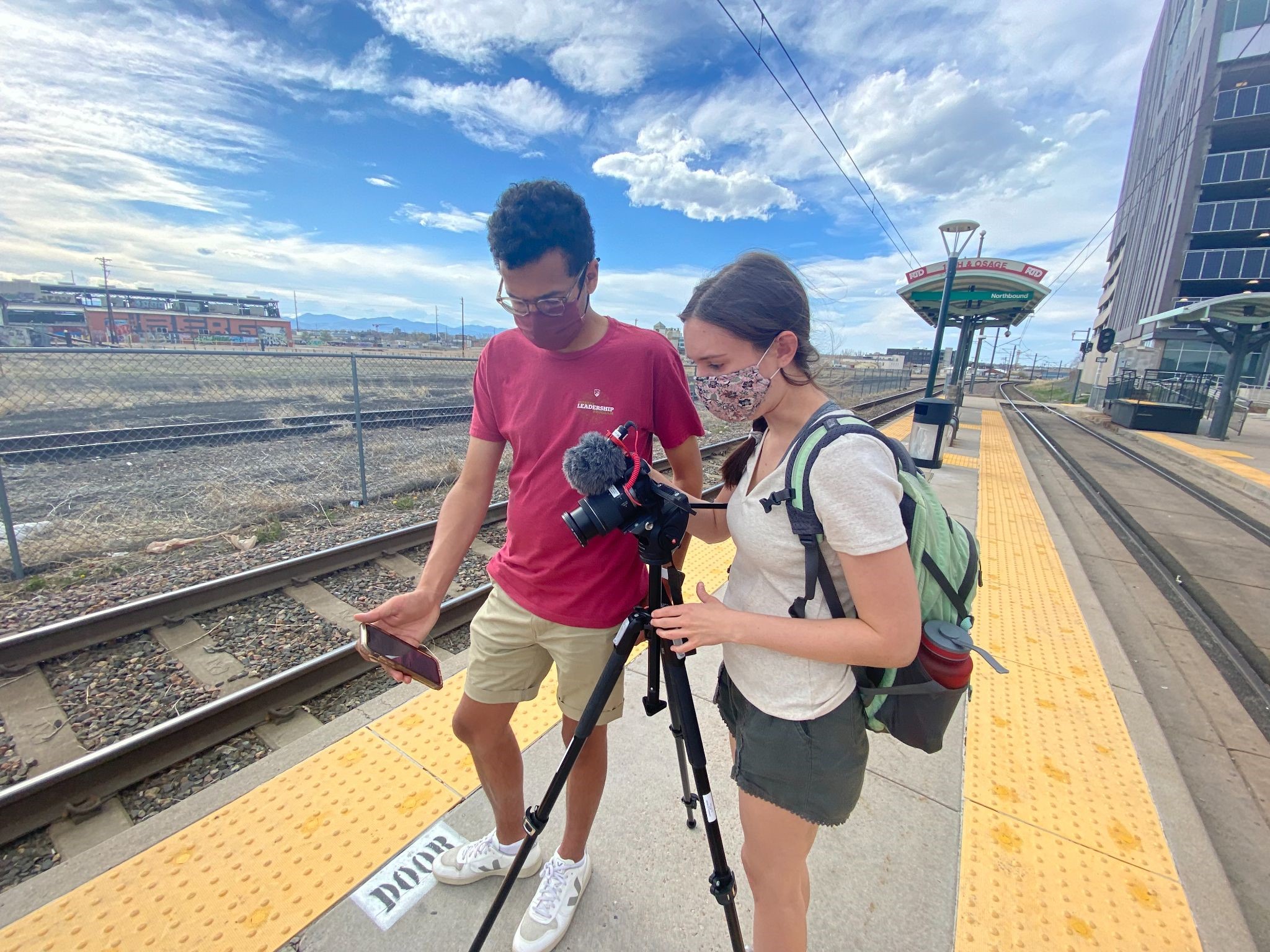Biology of Healthy Aging: Mindfulness and Meditation
By: Anna Foley, Undergraduate Student, Communication

Through the course of a year, I studied the biology of aging in college students specifically surrounding the topics of physical activity and wellness levels. The public problem addressed by this project was exemplified during the onset of the coronavirus pandemic. During the coronavirus pandemic, loneliness and social isolation became escalated issues, in which many factors contribute to the heightened risk for anxiety among college students and seniors in particular. In older adults, loneliness and isolation from society pose public health risks and put them at risk for dementia and other serious medical conditions. In college students, loneliness predicts mental health problems, including anxiety and depression. Along with exercise and keeping a healthy lifestyle, mindfulness and meditation education are extremely vital to help people improve mental health. Mindfulness can help relieve stress, treat health problems, improve sleep, enhance self-awareness, control anxiety, lengthen attention span and help with memory loss, generate kindness, and promote overall emotional health.
Throughout this project, I conducted research on different studies regarding exercise and physical activity levels; created and sent out research surveys about the Biology of Healthy aging in students enrolled at the University of Denver (DU); and composed an actionable plan to increase exercise and wellness on DU’s campus. From there, I proposed and presented these initiatives to Chancellor Jeremy Haefner, the Executive Director of Health and Counseling, Dr. Michael LaFarr, and the Vice-Chancellor for Athletics, Recreation and Ritchie Center, Karlton Creech.
A few of the statistics that I presented centered around the connection between physical and mental health. During my research, it was concluded that 60% of college students are not meeting dietary and physical activity guidelines (20min/ 5+days), and 95% of college students fail to eat the recommended amount of fruit and vegetables (which is five or more servings a day). The significant decline in physical activity and increase in sedentary behavior during young adulthood and college years is worsening during these unprecedented times. Along with the physical side, it is necessary to look at the mental side. It can already be difficult to find connections to feel more a part of a community during a pandemic, so I slightly shifted my focus on this project from the physical side to the mental health side of human health with the focal point on mindfulness.
My overall goal going forward was to promote community engagement. I wanted to engage DU students and connect with an organization outside of the university. With funds from my partnerships from the DU Grand Challenges ACE Grant, Routinify, and KAVOD Senior Life, I launched a Mindfulness & Movement Class that included ten DU undergraduate students with ten KAVOD Senior Life community members in a 7-8 week mindfulness and movement training to promote improved social connections, self-efficacy, and physical and mental health. This course was taught by Amanda Gregg from Soaring Eagle Healing.
The weekly one-hour mindfulness training sessions were completely free and voluntary to all participants, and anonymously evaluated various common biological and mental health measures over the course of the program. It sought to identify changes in physical or mental health feelings and actions. The purposeful partnering of college students and senior community members was intended to provide insight into how intergenerational partnerships and perspectives may impact the different generations’ outlooks and daily mental and physical health approaches. To assist participants in meeting their mindfulness and physical movement goals, we created daily check-ins (with Routinify tablets and devices) so that participants could track their progress and activities over time. Not surprisingly, the research gathered found that physical health habits tie into mental health by helping reduce anxiety, depression, low motivation and activity levels, poor eating habits, and more. Mindfulness training and practice help reduce feelings of anxiety, stress, and procrastination, all of which tie into both physical and mental health.
By the end of this project, the results provided feedback on measurements and improvements in levels of anxiety, sleep habits, coping skills in life circumstances, higher levels of activity and movement, all relating to the wellbeing of the individual in their own life path. The outcomes from this project are beneficial to understanding the positive impacts of mindfulness and movement within the demographics of young and older adults. The well-being of a person fundamentally enables them to successfully overcome difficulties and achieve what they want out of life. This is what I want for all people, to achieve what they set their minds to, not letting negative thoughts hinder their abilities. All participants expressed interest to continue with this course. This project deepened my love for community engagement, especially revolving around health, wellness, and personal and communal development.
Editor’s Note: This work was supported with an ACE Student Scholars Grant, thanks to the generous support of the Arthur Vining Davis Foundations for DU Grand Challenges.

